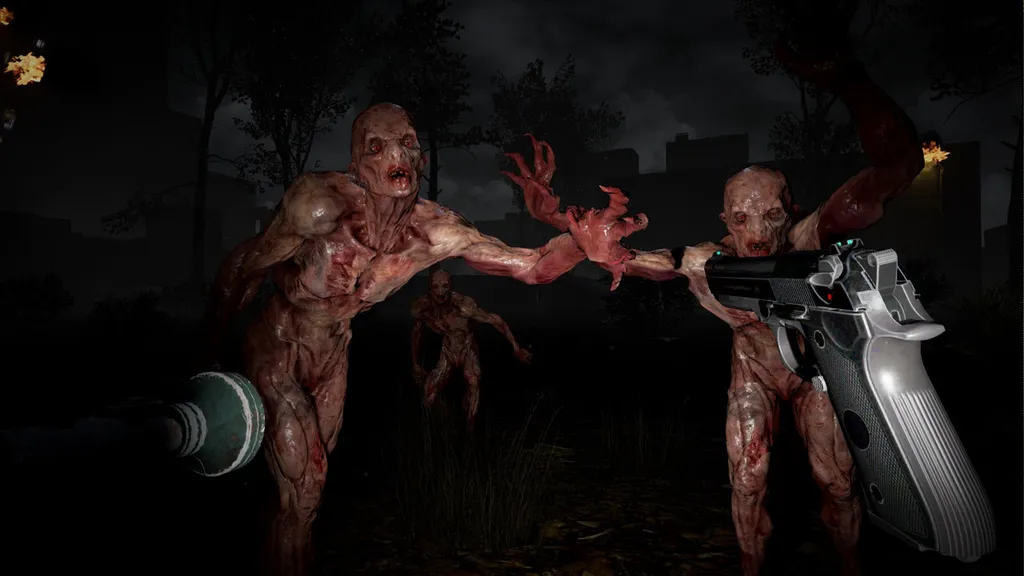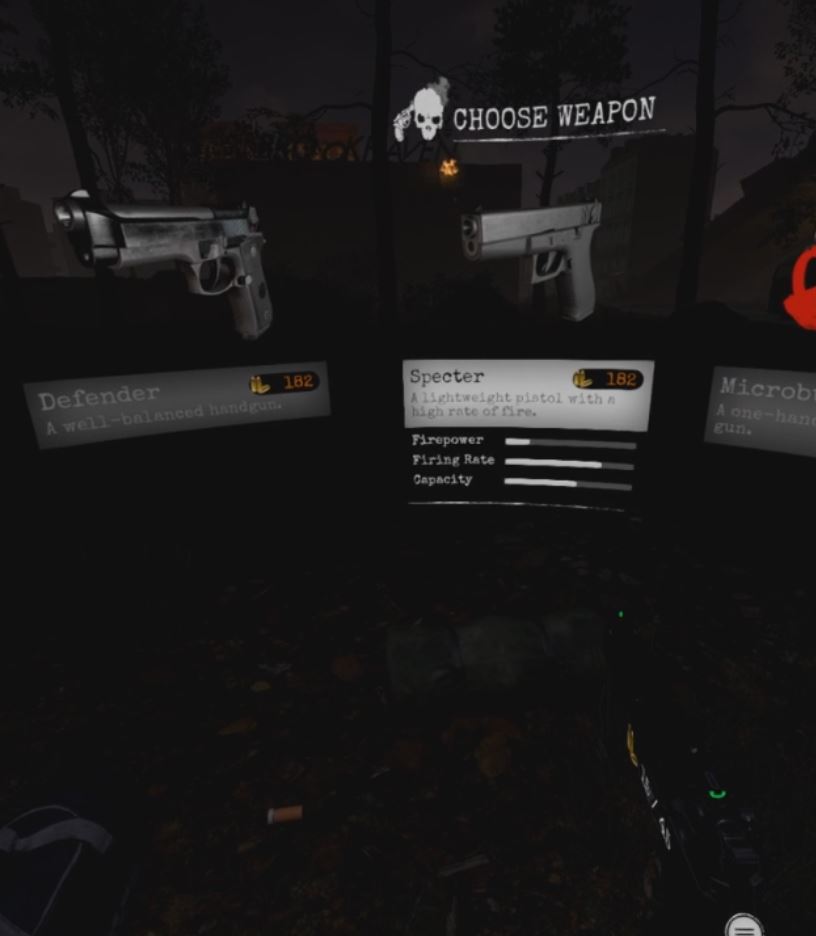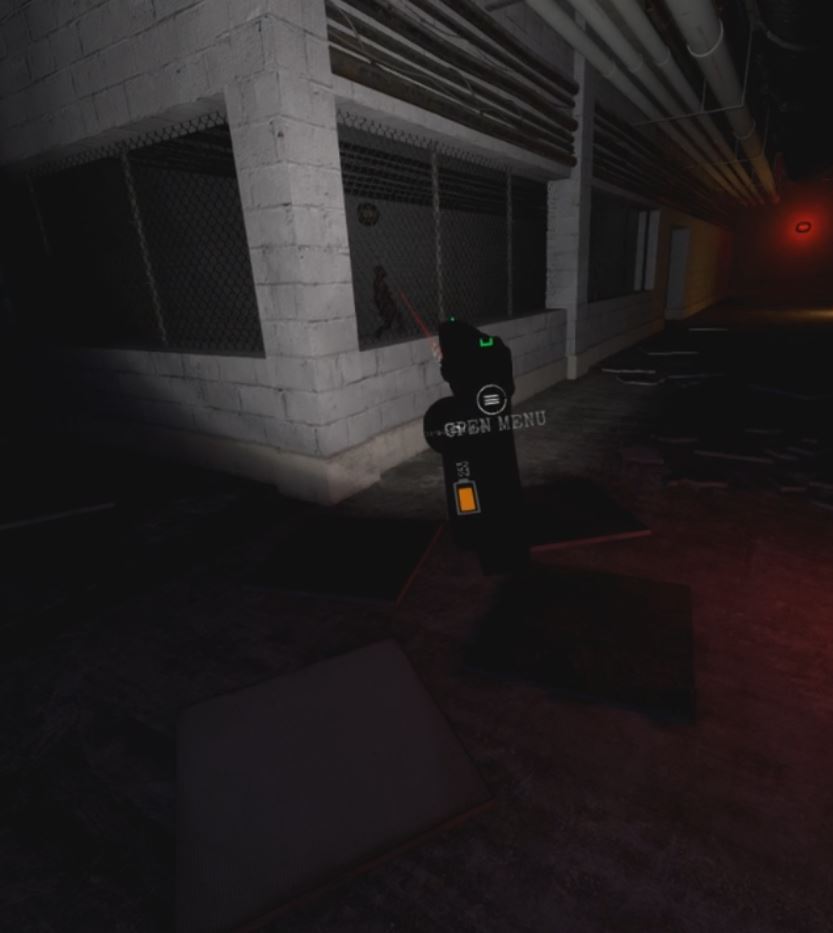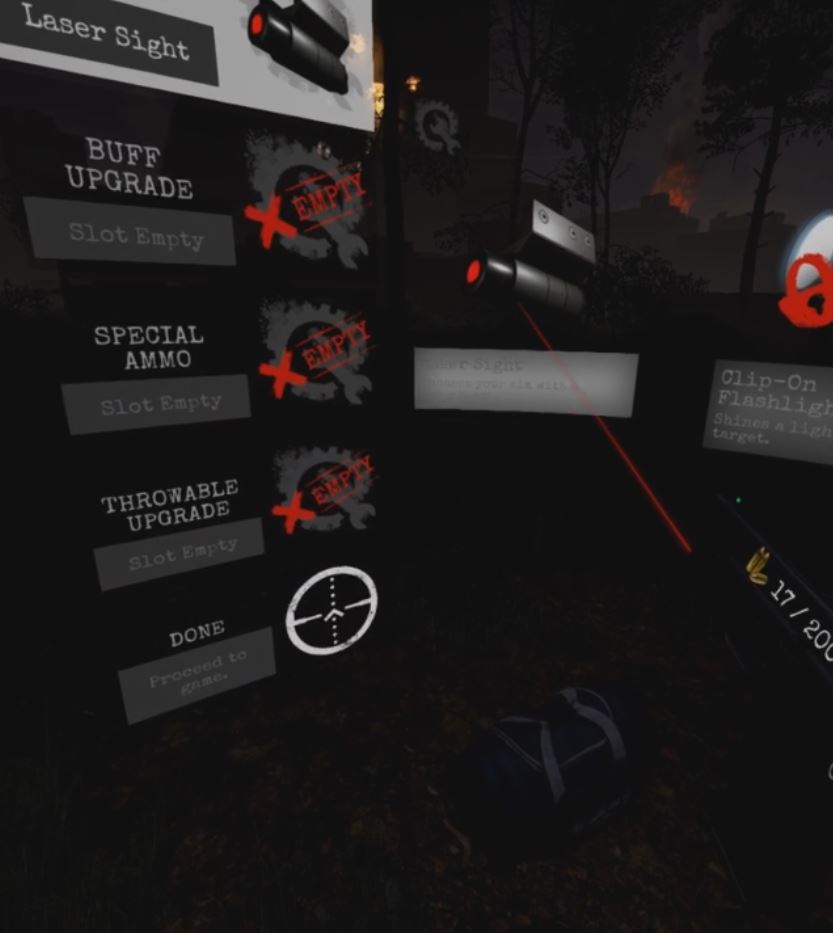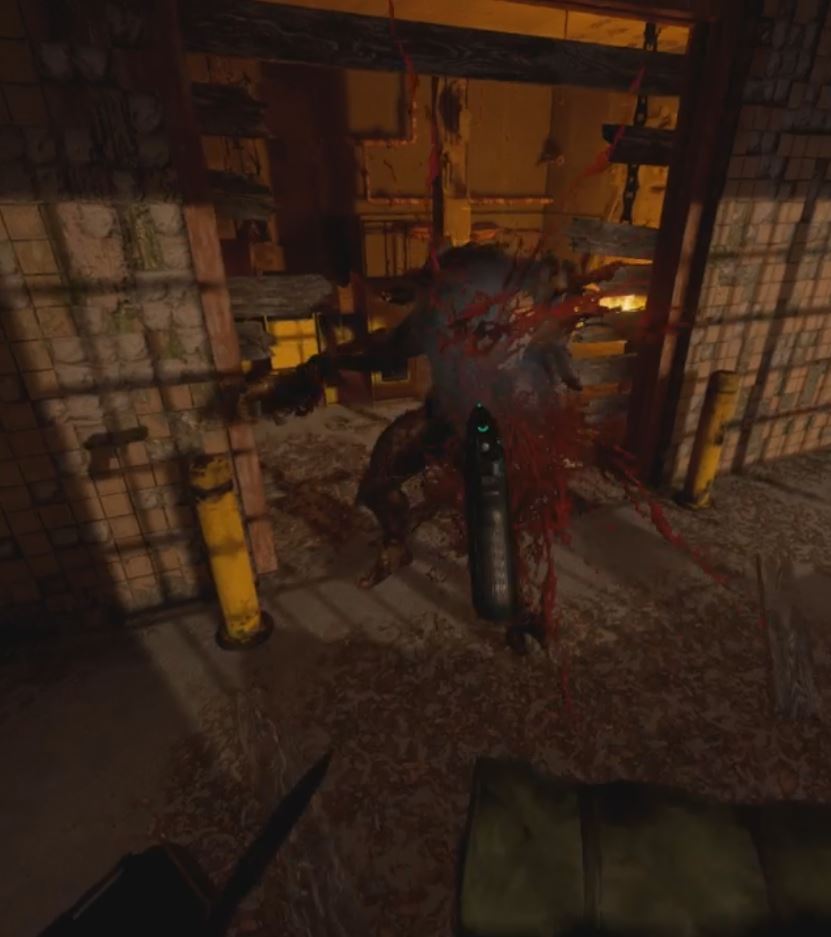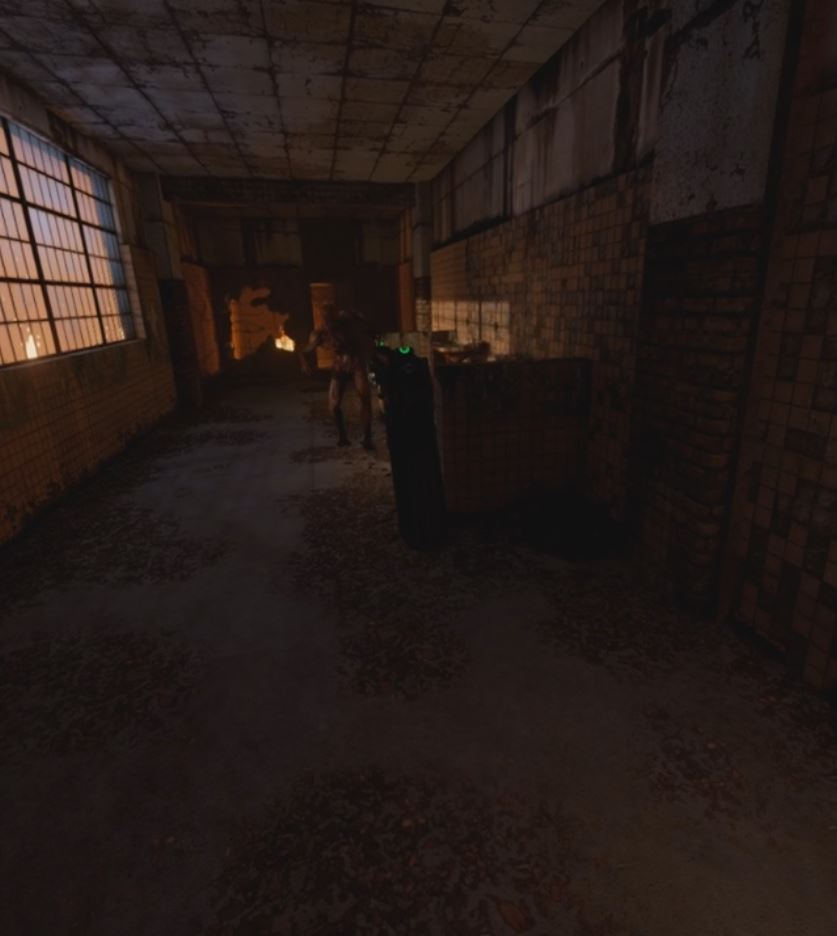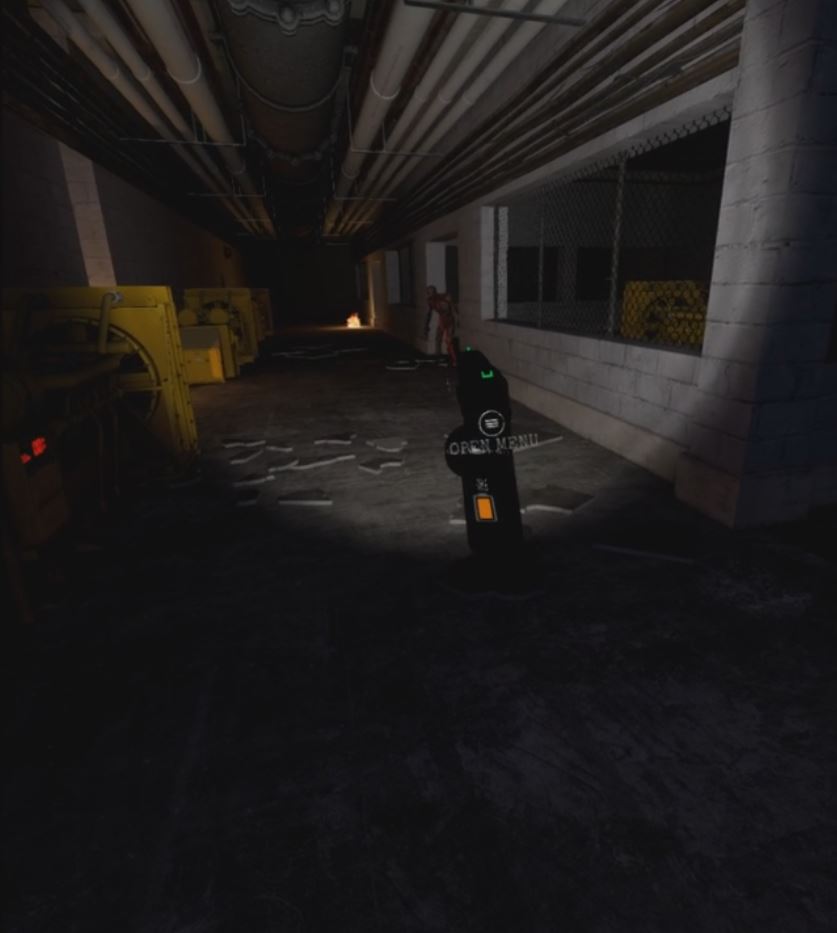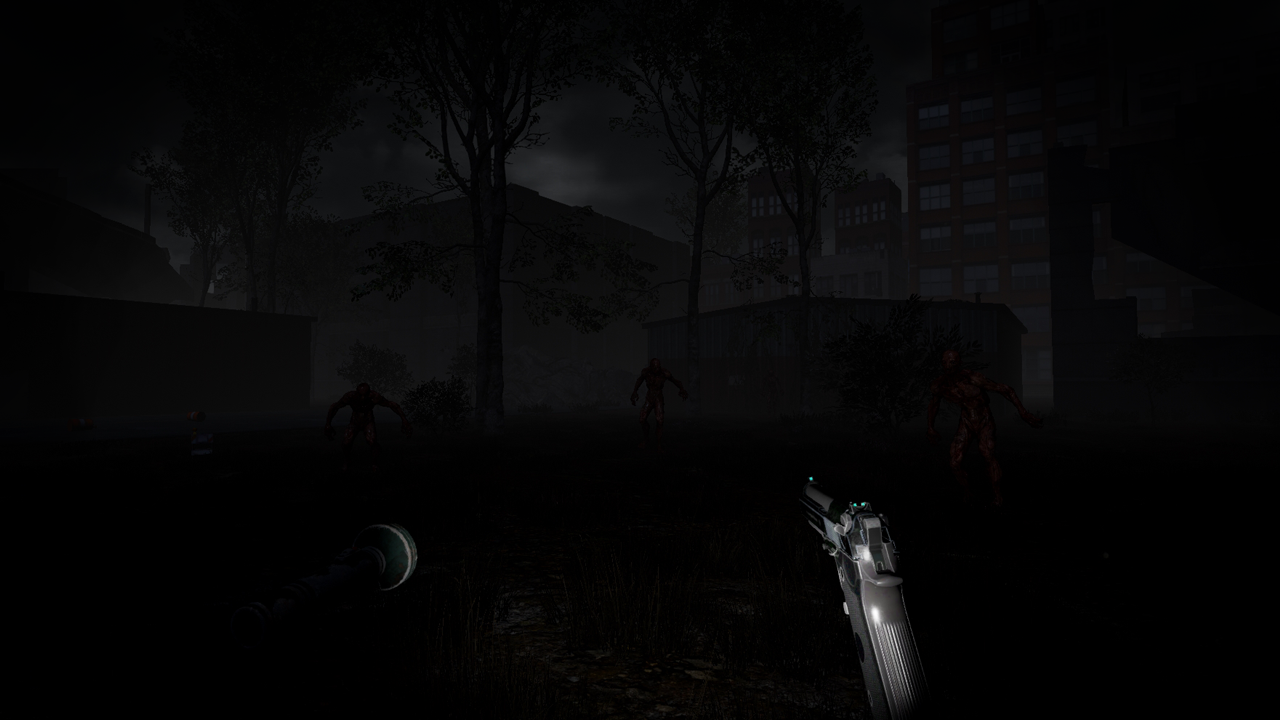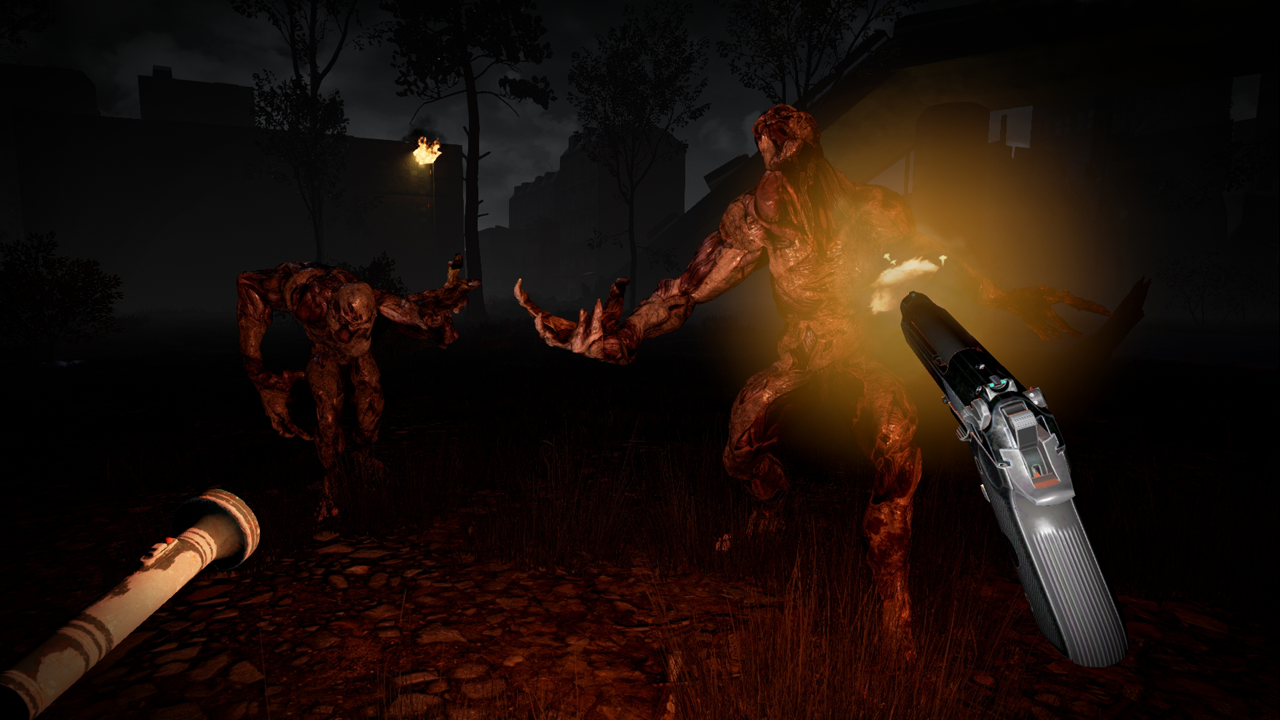Surrounded by darkness, I nervously point the flashlight in my left hand towards an empty field. In the distance, I see a slowly shuffling undead corpse walking towards me. To the right, another zombie starts making its way to my position, albeit much more quickly than the first. I turn the pistol in my right hand to the side and look at the grip of the gun – only 10 bullets left.
The faster zombie is upon me now so I level my arm and take its head off in one clean shot. Just as the slower zombie starts to approach me I hear a different sound coming from behind. Instead of a hulking corpse stumbling forward in disgusting twists of flesh, I see a zombie crawling towards me in erratic movements on the ground. 9 bullets left.
I spin back around and send 4 bullets into the standing zombie to take it down: 2 in the arm, 2 in the chest. 5 bullets left. Now that I turn to face the crawling corpse again, I spend the remainder of my clip laying it to rest. Wave completed.
That’s a normal, frenetic, afternoon in The Brookhaven Experiment, one of the scariest, most intense, and truly exhilarating VR games to date. While the original demo for the game exploded onto the scene months ago, garnering dozens of viral video reactions and positive press from the gaming media, the full and proper core game itself has been in development behind the scenes ever since.
Unlike most VR games, wherein the concept for what would make up a traditional demo actually constitutes the entirety of the experience (since the vast majority feel more like glorified tech demos than actual games,) The Brookhaven Experiment actually resembles a complete and more robust full game now. I can truly tell how much work went into finalizing this product.
For starters, it’s now more than just a single wave-based survival mode, although Survival is still half of the experience with its own game mode in the main menu. While it may be short by traditional game standards, the Campaign mode offers a more structured format for progression. It’s a great starting point for new players and veterans of the demo alike.
Everything starts with an NPC speaking in your ear, directing your attention and feeding you information, as you work your way through a series of levels. A number of the environments in the full game are indoors now, such as a lab basement with monsters coming around chain link fences you can shoot through if you spot them early.
These indoor spaces are incredibly effective at increasing the tension when compared to the outdoor cityscape seen in the demo, as the confined nature heightens your sense of claustrophobia and restriction. You can get a small glimpse of some of the environments in the screenshots below.
However, I did find myself wishing for the ability to freely move around my environments. Back when The Brookhaven Experiment’s first demo released, it felt new and fresh. Standing in one place shooting zombies seemed passable for a new medium. But now that we’ve seen other games use more versatile movement systems like Raw Data or Arizona Sunshine, I wished for something similar in the zombie wave shooter that popularized the genre. Instead, you’re confined to the same spot in each level.
I found that the inability to move, combined with the funnel-of-enemies approach that guides them all towards you, did do a good job of amplifying the horror initially, but eventually the illusion starts to fade away. In a similar situation in real life, I could simply step away or hide from the monsters, not stand in the middle of an empty hallway while they mauled me to death. VR horror seems to work best when those layers of illusion are least noticeable, not when they stick out. While it could partially be due to personal taste, I’ve always preferred horror games that terrified me to my core with lingering fear in the back of my mind for hours or days after I finished playing, not just short and simple zombie-fueled jump scares.
Take The Walking Dead, for example. It’s a great series not just because of the gross and creepy zombies, but because of what the post-apocalypse does to seemingly normal people. It’s terrifying because of what the non-zombies do to one another in the face of catastrophe. I don’t expect every game to reach arbitrary storytelling standards by any means, especially considering that some games are just mean to be dumb fun, but the shallow nature of The Brookhaven Experiment’s setting and exposition are worth noting nevertheless. It does hold it back from being a landmark experience.
What the full game does absolutely do is expand tremendously on the core gameplay seen in the original demo, forcing players to carefully plan out their assault on the incoming monsters. Some will run at you, some are giants that take a clip-emptying number of bullets to kill. The variety and creativity of the team at Phosphor Games is certainly on display.
Throughout The Brookhaven Experiment the length of time it takes to reload can seem like roughly 100 times slower than it should due to the adrenaline-pumping anxiety you’ll feel with multiple gruesome foes pressing down on you. In order to get out alive, you’ll have to keep your wits about you, save the batteries of your flashlight, look all directions, and then carefully plan your attack so you aren’t left reloading when one of the big guys comes in close.
The monsters seem really responsive to where and how you shoot and hit them — a well-placed punch or slash will knock them back and a shot to the shoulder will take off an arm rather than the entire beast.
This is a pain point in some VR games, especially when close quarters hand-to-hand combat is involved. But in The Brookhaven Experiment, a good swipe with your knife at a monster that wandered too close can go a long way. Although the lack of haptic resistance and feedback still plagues modern VR from truly delivering the sensation you’d feel when making actual physical contact, it’s satisfying all the same. The green sights on the default pistol are much improved as well, adding more visibility and accuracy in the darkness.
The Brookhaven Experiment feels like a pitch-perfect implementation of the gallery shooter genre, transplanted into VR, with detailed and strikingly scary zombies. It doesn’t have the narrative weight of a meatier plot-drive experience, but it nails the beats it aims to with some of the best thrills you can find on any VR device to date.
The Brookhaven Experiment builds on the foundation of its popular demo and establishes itself as one of the premiere VR zombie shooter experiences on the HTC Vive. It doesn’t have a deep or engaging narrative, but between the Campaign and Survival modes there is enough content to satisfy fans of all experience levels. The new maps, enemies, and weapons take what was an already scary game and cranks things up to a downright hair-raising degree of terror.
Read our Game Review Guidelines for more information on how we arrived at this score.

